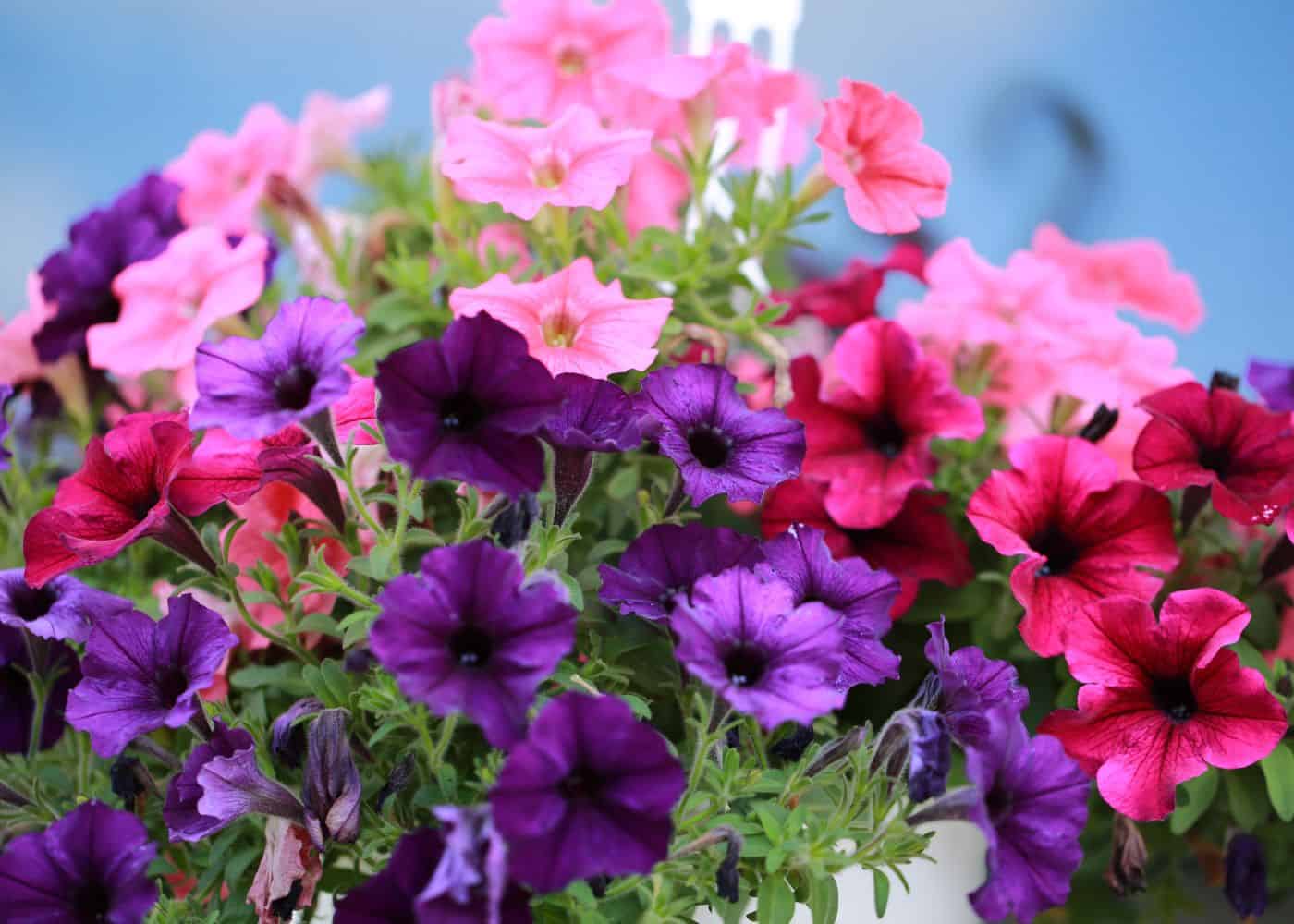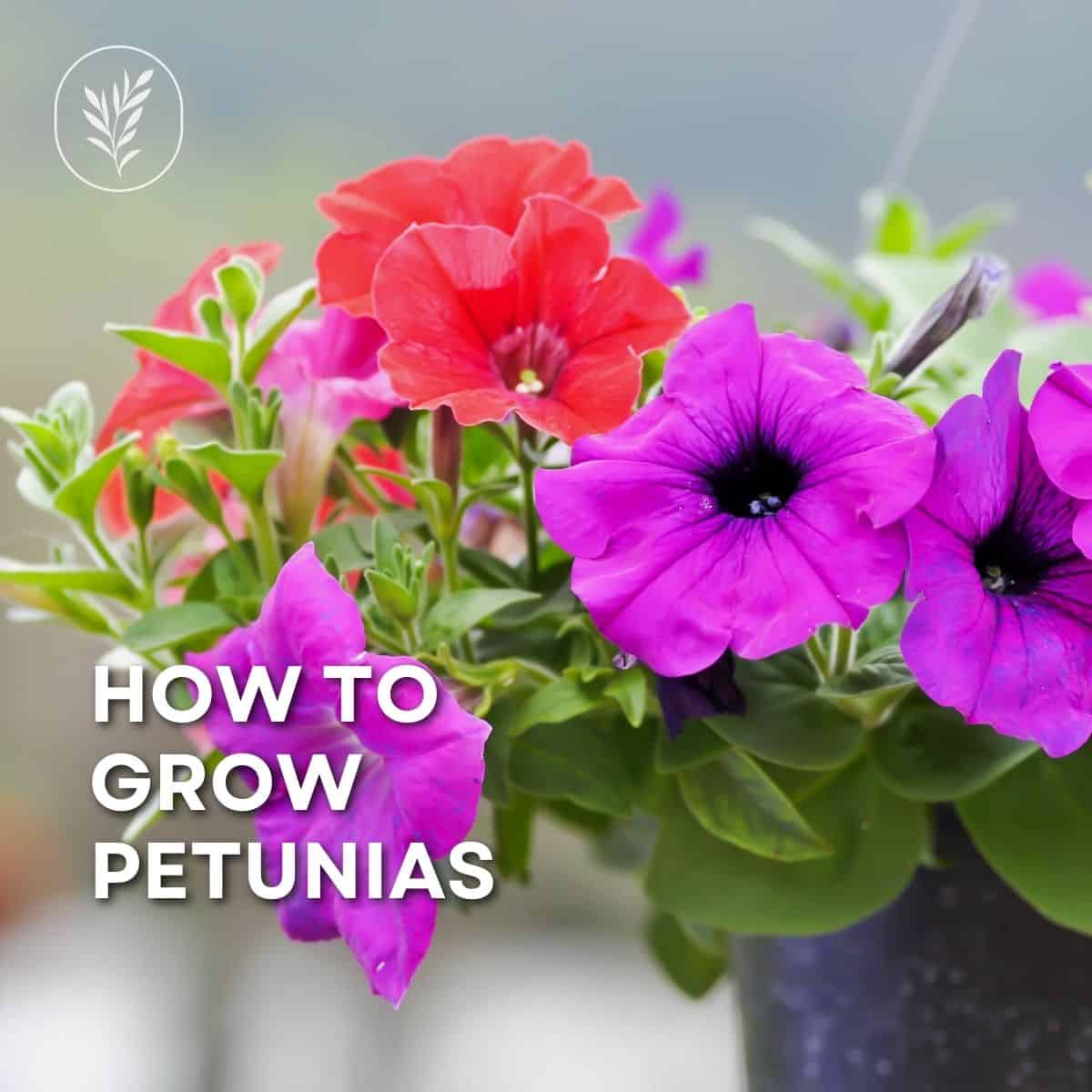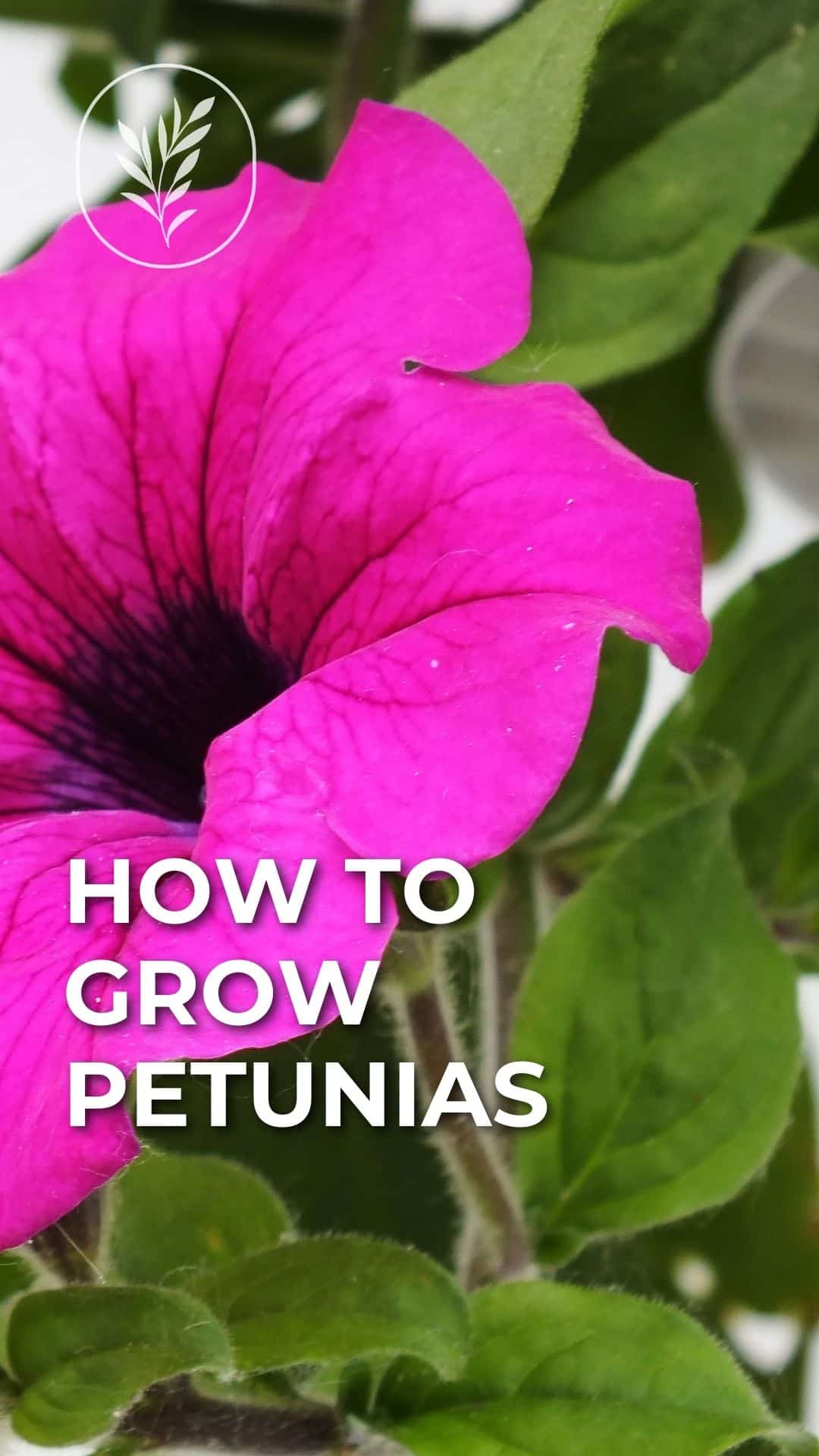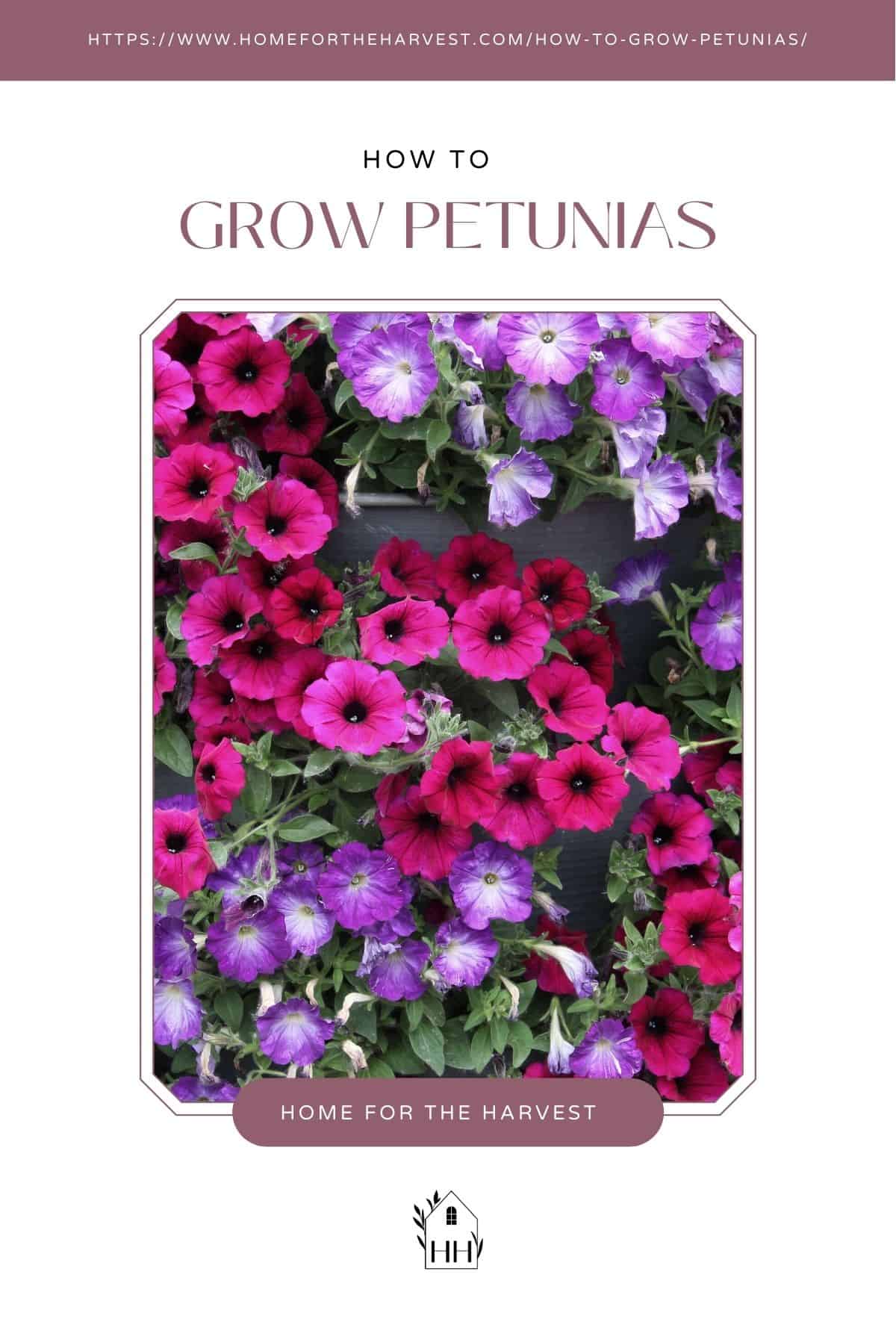When you imagine summer annuals, petunias are likely the first plants to come to mind. The colorful trumpet-shaped flowers are a favorite in garden beds and containers. Learn how to grow petunias!
There are several types of petunias to choose from, each with slightly different characteristics, but all are relatively easy to grow. Petunias are planted in spring after the last frost date, typically from seedlings. Give them full sun, one inch of water per week and regular fertilizing to get the most blooms possible from a single plant. Pinch the stems early on to encourage branching and prune mid-summer if stems become leggy.
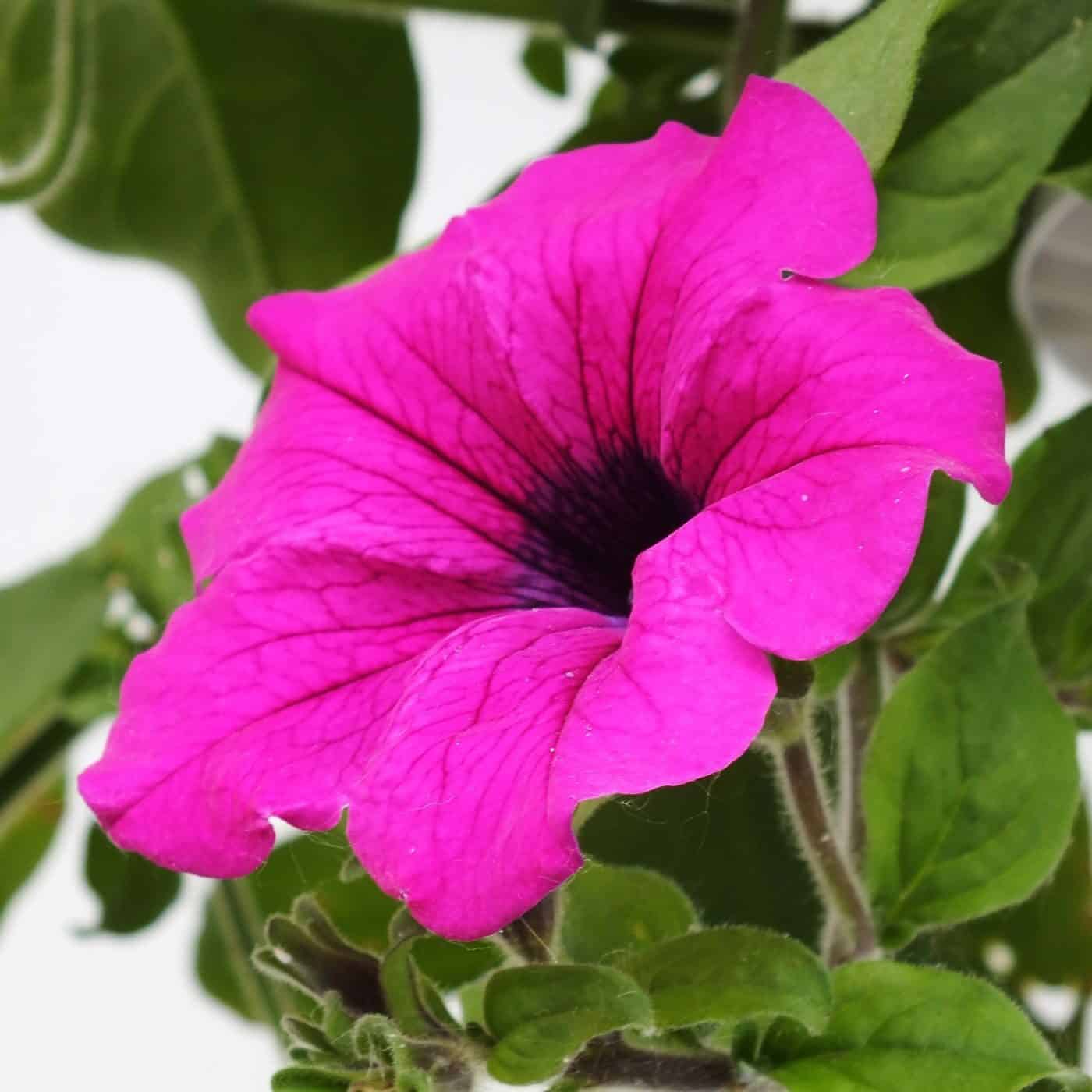
The basics of how to grow petunias
Petunias are well-known around the world for their stunning flowers that add quick color to gardens in spring and summer. The trumpet-shaped flowers are available in an impressive range of colors and patterns to suit absolutely any garden design.
The Petunia genus contains about 20 species of flowering plants native to the warm regions of South America. But most of the species you w ill find in your local nursery or online are hybrids, hand selected by growers for positive traits like color, blooming, or ease of growth.
This genus is part of the Solanaceae family, also known as nightshades. Many will recognize the other popular plants in this genus from the vegetable garden, including tomatoes, potatoes and chilies.
Petunias are not cold-tolerant and are typically grown as annuals. They also struggle in very warm climates and prefer areas with cooler summers and warmer winters. Although they are short-lived, the delight they add to gardens across the season is unmatched.
Types of petunias
Variety in color is not the only benefit. There are also different types of petunias, grouped by flower size and growth habit:
- Multiflora
- Grandiflora
- Milliflora
- Floribunda
- Trailing
Grandiflora petunias, true to the name, produce the largest blooms of all types. But this does come with a downside in growth. These petunias are sensitive to excess moisture and rot quickly in heavy rains or high humidity. They are best for drier climates and pots or baskets where they can be kept away from rain.
For a tougher option to plant out in the garden, try multiflora petunias. The flowers may not be as large, but the plants bloom prolifically and are more adaptable. Or, opt for floribunda blooms for the best of both worlds.
Milliflora petunias have adorable small blooms that cover the entire plant throughout summer. Although they are only around an inch and a half in size, the flowers are remarkably long-lived, allowing you to enjoy them all season.
Trailing petunias are defined by their growth habit, often used as a groundcover. The spreading stems can also hang over the edges of containers for a cascading, overflowing look.
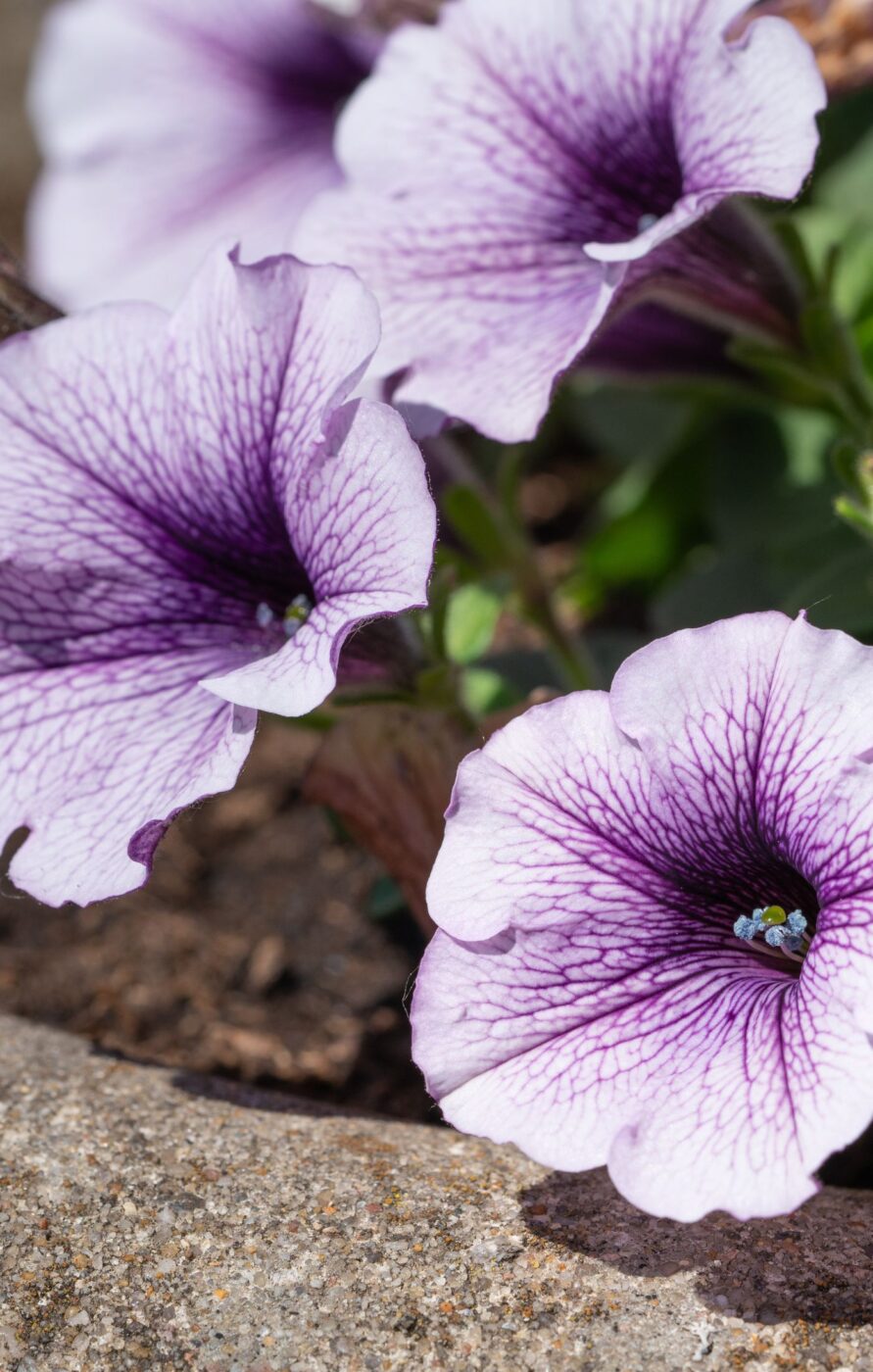
Petunia uses
One of the reasons why petunias are so popular is their many uses. These are just some suggestions of many potential options for using petunias in your garden:
- Plant them in pots. Petunias are wonderful container plants exploding with color. They look great on their own but can also be paired with other annuals.
- Use them as groundcover. Spreading petunias can quickly fill up empty space if you’re struggling to cover your beds.
- Plant them along borders. Thanks to the compact shape of some species, petunias are ideal colorful border plants.
- Choose for hanging baskets. Petunia blooms cascade beautifully over the sides of containers and look stunning in hanging baskets. Make sure you hang them at eye level to truly soak in their beauty.
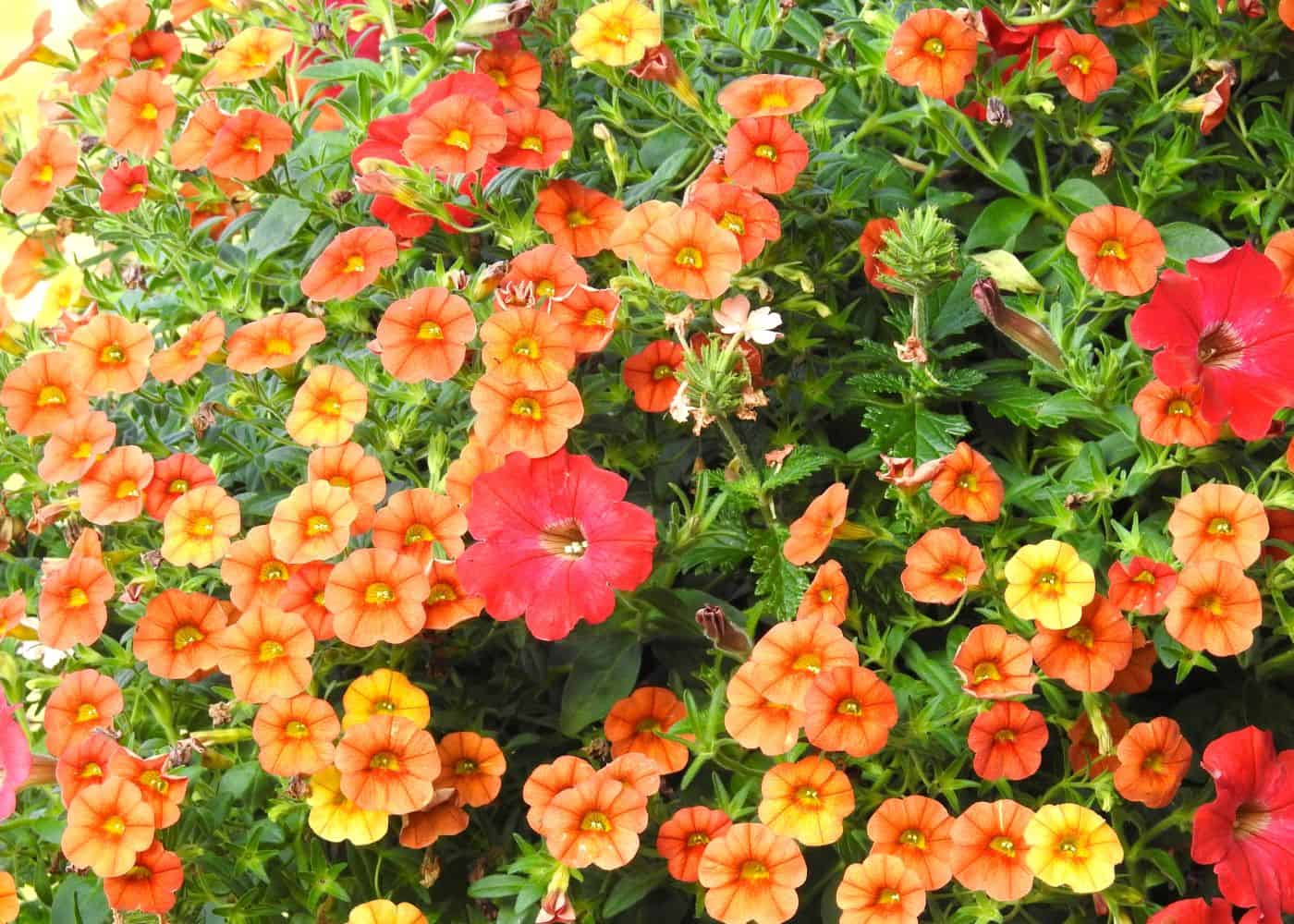
Planting petunias
Petunias are typically grown from seedlings or starter plants purchased from a nursery. Although it can be tempting to choose the one with the most flowers, it’s better to choose a smaller and healthy-looking seedling that doesn’t have many flowers. This will allow the plant to focus its energy on establishing roots after transplanting rather than taking care of the existing flowers.
You can also plant petunias from seed if you prefer, although this method is not common. As they take a while to establish, start seeds indoors around 10 weeks before the last frost date in your region. This means they will be ready for transplanting as soon as the weather warms and all danger of frost has passed.
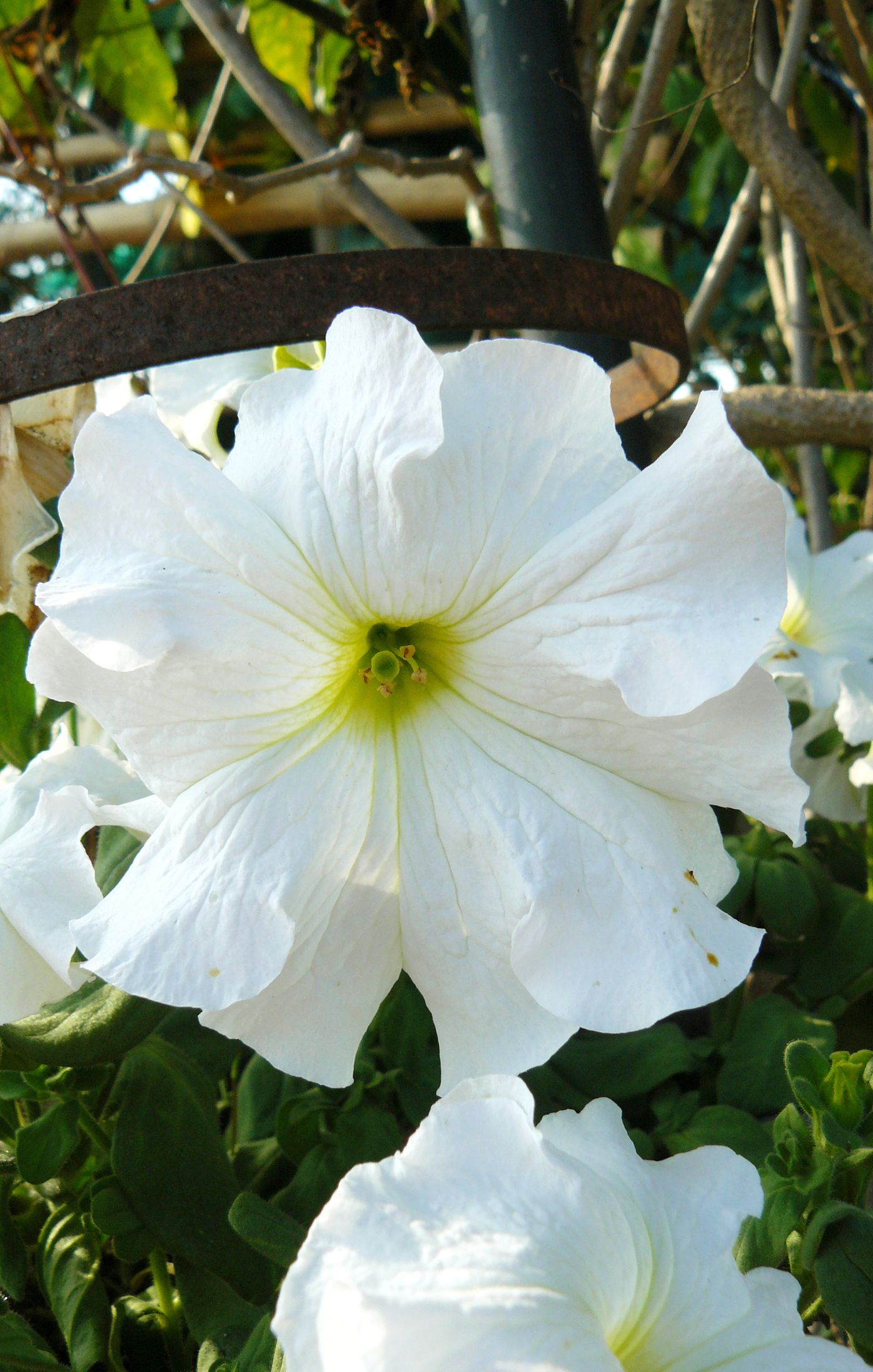
Where to plant petunias
Learning how to grow petunias is great. Petunias need full sun to form the best possible flowers. This is equal to a minimum of six hours of direct sunlight per day. They can handle slightly less light but won’t produce as many blooms.
In warmer regions with harsh summers, petunias benefit from some light shade in the early afternoon when the sun is strongest. This will stop them from drying out too quickly – especially those planted in containers.
Choose an area with well-draining, rich soil. This is even more important for Grandiflora petunias that are prone to rotting. They perform best in slightly acidic soil with a pH below 7 but can also adapt quite well to other conditions.
Can petunias grow indoors?
If you don’t have a backyard or any outdoor space for containers, you can consider growing petunias indoors. They don’t make great indoor plants as they need plenty of light to produce flowers. But, if you have a sunny south-facing window that gets direct sun all day, they can survive as houseplants too.
Planting petunias in containers
Petunias in containers also need a full sun position, whether kept down low or hanging up high in baskets. Use a high-quality potting mix amended with coconut coir to lighten the mixture.
The pots don’t need to be excessively deep as the root systems are quite shallow. If you do have a deep pot and don’t want to fill it completely with soil, lighten the container and take up space by placing a few empty plastic bottles at the bottom.
Petunia care
Petunias are not fussy plants and don’t need much attention throughout the season. That being said, they will grow best with the right watering, fertilizer and some light maintenance.
Watering petunias
Balance is important when watering your petunias. They are prone to rotting when soil stays moist for long periods, but will also wilt quickly if the soil is left dry for too long.
Out in the garden, petunias have similar requirements to other ornamental plants. They will survive happily on around an inch of water per week, requiring slightly more when the weather is warm. This should also take rain into account.
When watering, water slowly and deeply, focusing the stream of water on the soil only. This will reduce the risk of fungal disease and encourages the roots to grow deeper into the soil.
Petunias in containers need to be watered more frequently. The soil in containers will dry out much quicker, especially in full sun and high temperatures. Test the soil daily and water when the top layer has dried out. You can expect to water every two to three days or more, depending on environmental conditions.
Fertilizing petunias
If you want the best performance possible from your petunias, a fertilizing routine is essential. For nutrient-rich soil amended with compost, there is no need to fertilize at planting time. But in all other cases, your petunias will benefit from an application of a balanced slow-release fertilizer.
Once summer sets in, apply a low-concentration liquid fertilizer specialized for flowering plants. This will improve blooming to give you the most flowers possible. The exact period between applications will depend on your petunia type but most need a top-up every few weeks.
Maintenance
Light pruning soon after planting and in the middle of the season will greatly improve growth and deliver more flowers.
Once the seedlings are a few inches tall, pinch the ends to encourage branching. You can do this with your fingers or a pair of shears. Only remove a small amount of each stem to promote new growth. You can complete this process a second time to make the plants even bigger, although a second round usually isn’t necessary.
In the middle of summer, if your petunias are beginning to look leggy, you can cut them back again by a few inches. This is useful for stems that have lost their leaves, making the plant look less diminished. The new stems that grow back should have lush leaves to last the rest of the season.
Deadhead flowers throughout the season to keep the plant looking healthy and to direct energy toward the production of new vibrant blooms.
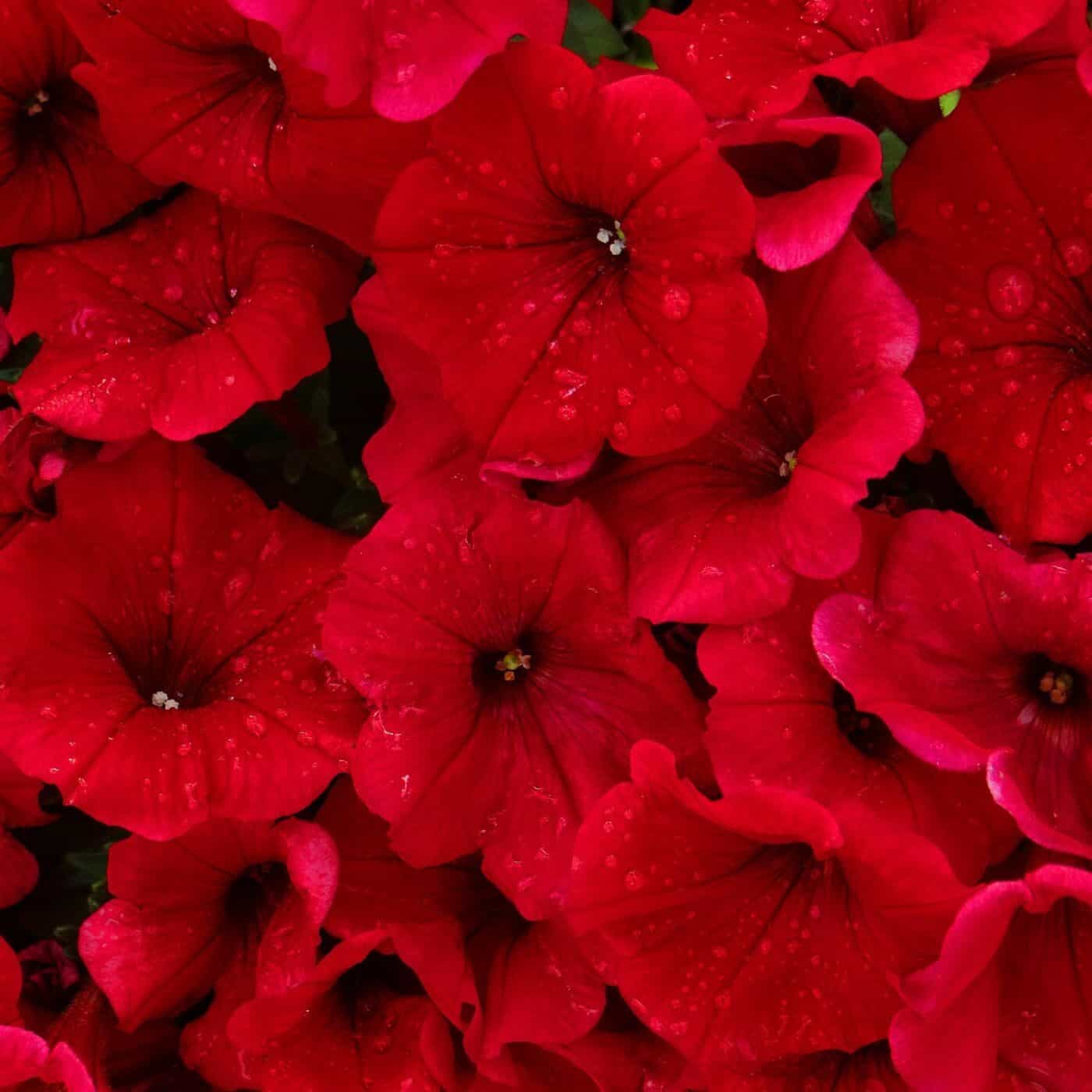
Propagating petunias
If you want to save your current petunia variety to plant again next season, or if you want to increase your stock the following spring, try propagating. Petunias can be propagated from stem cuttings and protected indoors over fall and winter, ready to plant again once the weather warms.
To get started, remove a cutting of healthy green growth with sharp, clean shears. It should be a minimum of 5 inches long, preferably slightly longer. Remove the leaves from the bottom half of the cutting and trim off any blooms or buds.
Dip the end of the cutting in rooting hormone to encourage root growth. Then plant in a container filled with a well-draining propagating mix and cover with clear plastic to increase humidity. Keep the soil moist for a few weeks while you wait for roots to develop.
Common petunia problems
Petunias are relatively problem free. But, if you encounter any of these issues, apply the fixes as soon as you can to get them back to strong growth.
- Lack of flowers: Typically caused by low light or incorrect care. Make sure they have full sun and plenty of nutrients. Also deadhead frequently to make space for new blooms.
- Wilting: Caused by too little water or too much water. Improve drainage to limit chances of root rot and water as soon as the soil dries out. They will need water more often when temperatures are high.
- Aphids: Remove with insecticidal soap or neem oil with repeat applications until all signs of pest problems are gone.
FAQs about growing petunias
Do petunias need sun or shade?
Petunias need lots of sun. A minimum of 5-6 hours of sun is recommended. However, a full day of sun is best in most climates.
What month is best to plant petunias?
Petunias thrive when nighttime temperatures are in the 55 to 65°F range and daytime temps are between 61 and 80°F.
How long do petunias usually last?
n cold climates, petunias are annuals and only last one growing season. Within their warmer growing zones, petunias will come back every year but still don’t last very long—about three years.
References
- Moon garden ideas and top 25 flowers to include
- 10 hummingbird garden ideas
- When To Plant Flowers
- 101 Hummingbird Flowers To Attract Pollinating Birds To Your Garden
Resources
- University of Florida: Petunias
- University of Washington: Researchers discover how petunias know when to smell good
- Iowa State University: Starting Petunias Indoors


